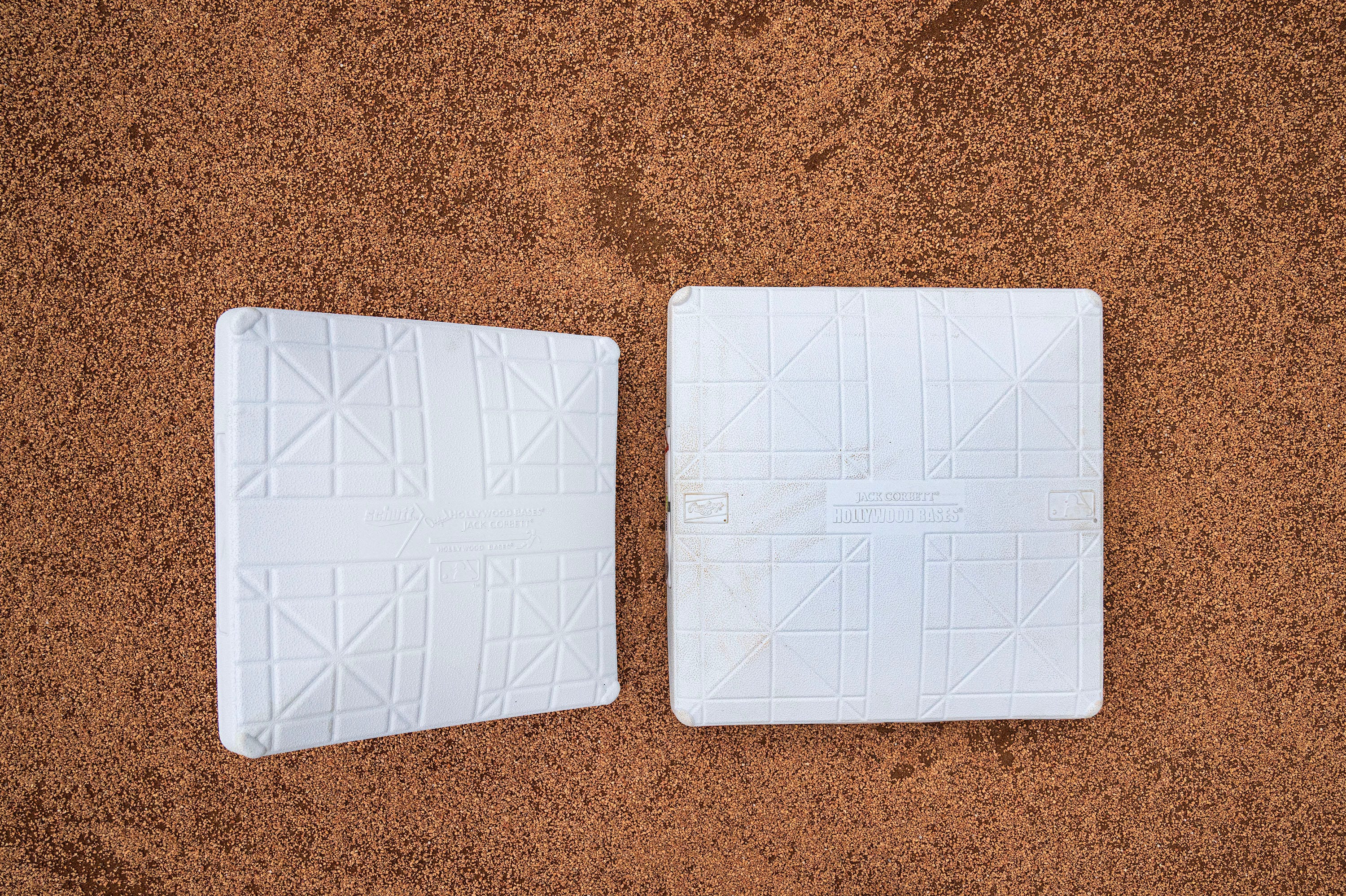MLB's new baserunning rules include larger bases, pickoff limits

As the number of home runs has risen in recent years, stolen base attempts have declined with MLB teams preferring to play for the big inning rather than a single run. However, the anticipation of a stolen base adds extra excitement to the game that MLB would like to see return.
By making the bases slightly larger, a runner has less distance to cover to make it safely, thereby increasing the percentage of successfully stealing a base. Larger bases also help reduce the odds of injury from a collision between a fielder and a runner.
MLB'S NEW RULES: Understanding the shift ban, pitch clock and more
NEWSLETTER: Sign up to get the latest sports news and stories sent to your inbox
How the baserunning rules work
The bases are now 18 inches square (previously 15 inches). That decreases the distance between first, second and third base by 4.5 inches. (Home plate – which stays the same size – to first base is 3 inches shorter.)
In addition, pitchers are limited to a maximum of two pickoff attempts per plate appearance. If a pitcher attempts a third pickoff throw and doesn't get the runner out, it's an automatic balk and all runners move up one base.
MLB's other new rules for 2023
Shift ban: At the start of each pitch, teams must have at least two infielders on either side of second base, with all four positioned on the infield dirt. Infielders may not switch positions unless there is a substitution.
Pitch clock: There is a 30-second timer between batters and a time limit between pitches. After receiving the ball from the catcher or umpire, pitchers are required to begin their motion within 15 seconds with the bases empty or within 20 seconds with runners on base. Hitters must be in the batter's box and ready for the pitch by the time the clock reaches 8 seconds.